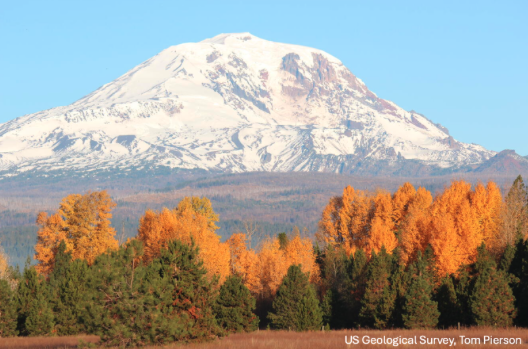These houses were rebuilt after the 2012 Taylor Bridge Fire and survived the 2016 Highway 10 Fire.
On August 13, 2012 construction workers welding on a Highway 10 bridge deck near Cle Elum, Washington caused a massive wildfire, which become known as the Taylor Bridge Fire. It burned 23,500 acres, destroying 61 homes and multiple outbuildings. One thousand fire personnel were assigned to the Taylor Bridge Fire, which continued to threaten homes for the next fifteen days.
At the start of the fire, crews attempted to rescue homeowners as the wind-driven flames raced up the hill from Highway 10, but the crews were driven back by a wall of flames. Homeowners were forced to evacuate by any means possible, or to shelter in place. One homeowner was rescued by helicopter. It was truly a miracle that no one was injured.
On July 2, 2016 a fire ignited in the same stretch of highway when a vehicle with a flat tire on a boat trailer pulled off the road into the dry grass. The fire, later named the Highway 10 Fire, was wind-blown and initially threatened five homes on a steep slope – homes that had been destroyed by the Taylor Bridge Fire in 2012 and had since been rebuilt. Firefighters were able to stage structure engines to protect each home, while wildland crews fought the flames. This fire burned 40 acres along Highway 10, and no buildings were destroyed, and it was contained in hours rather than days.
So what was the difference?
Two factors played a significant role in the drastically different outcomes between the Taylor Bridge Fire of 2012 and the Highway 10 Fire of 2016. The first factor was the types of fuels in the landscape, and the second was the building construction and vegetation in the immediate areas surrounding the threatened homes.
In 2012, the landscape was primarily sagebrush and grass with a mix of Ponderosa Pine and Douglas fir. Southwest winds of 5-10 mph drove flame lengths of 3-4 feet through the sagebrush and grass. Wind gusts up to 30 mph increased flame lengths to 20 feet, which then ignited the trees, creating tremendous heat and sending embers flying ahead to ignite more fire. Crews could only try to defend homes, while helicopters worked through the day to try to slow down the fire at the head.
The 2016 fire had a steady wind out of the southwest at 5-10 mph. Flame lengths of 3-4 feet burned primarily through grass and downed fuel from the 2012 fire. The absence of heavy brush and trees kept the fire on the ground, allowing firefighters and heavy equipment operators to work the perimeter of the fire. Helicopters worked the head of the fire, slowing its progression.
After being destroyed in the Taylor Bridge Fire, the rebuilt homes were built to the standards of Kittitas County’s new Wildland Urban Interface Code using fire resistant materials.
Homeowners had followed Firewise principles around their homes. The 2016 fire burned up to and around structures, yet no structures were lost or damaged.
Firefighters were staged above the Highway 10 Fire of 2016, protecting the homes threatened by the fire below. The homeowners had created lean and clean defensible space, so it was safe for structure protection firefighters to be there. One family was so confident in this defensible space that they refused to leave their home when given the evacuation order and watched the fire from their deck.


Homeowners taking responsibility for hardening their homes and working with their neighbors to reduce fuel loading made a huge difference in the outcome of the 2016 fire.
Kittitas County Fire District 7 and partners have also taken on important roles and responsibility around fire preparedness in the local community. District 7 and the Kittitas County Conservation District collaborated to implement a fuel reduction and chipper crew program in 2012 prior to the Taylor Bridge Fire. Most of the homes that survived that fire had fuel treatments around their home.

The overwhelming loss to our community galvanized both myself as the Fire Chief and our elected fire district Commissioners to become more readily involved in the program. The program eventually had 6 employees and a neighboring district joined us with 3 additional members. While the program has demonstrated success, funding is a continuous issue and program partners continue to look for solutions.
District 7 and other local agencies continue to reach out to home and property owners with education on Fire Adapted Communities, including Firewise principles and evacuation preparedness. Many homeowners have in turn reached out to their neighbors, creating new Firewise Communities, reducing fuels and cutting in secondary evacuation routes. The continuing challenge is to broaden people’s perspectives and to help them understand that we live in an area where wildfire is part of the landscape, and that we can successfully coexist and adapt to that reality.





